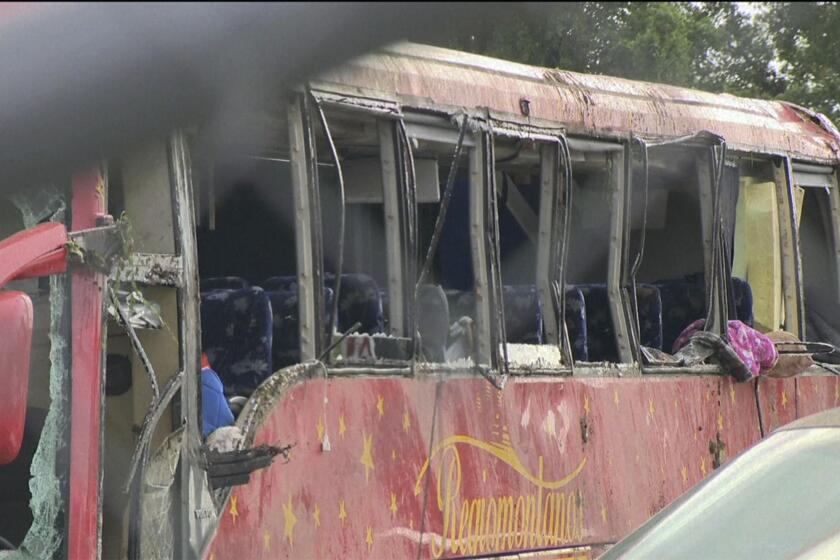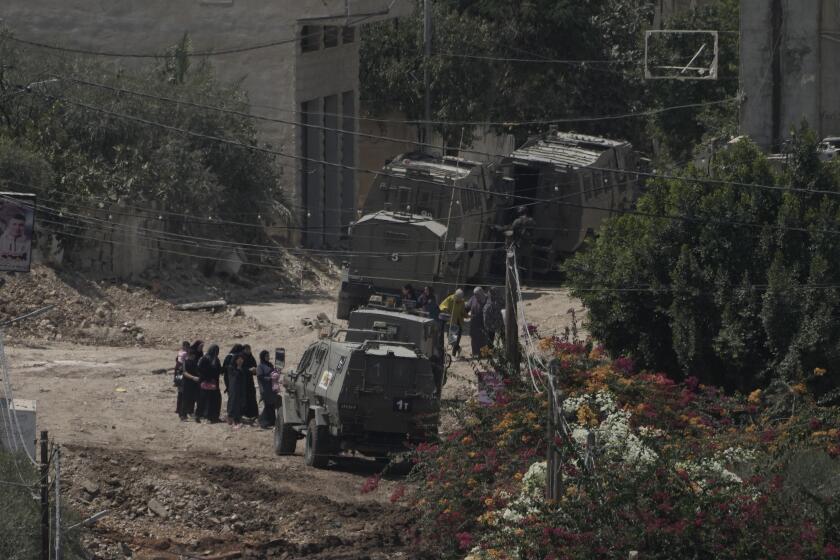Images and Realities From a War Ever Cruel : Baghdad bombing deaths: both tragedy and propaganda
War, while it is being fought, is always the strand that we see, not the whole cloth that finally emerges. It is thus in the interest of each side to aggressively market its own war-view, with vivid, immediate images of the conflict that put the best face on one side and the worst face on the other. The allied briefings offer those smashing videotaped replays of smart bombing, down to the delicate cross hair. The other side offers up, in the very selected images of war that Baghdad permits to be transmitted, Iraqi disaster scenes, down to the last charred woman and child. And so from this perspective of image rather than reality, the truly horrifying pictures of Iraqi civilians killed Wednesday by U.S. smart bombs exploding precisely on target--an apparent command and control center that seemingly was also being used as a shelter--must be counted as much a propaganda coup for Baghdad as a setback for Washington.
The problem for the concerned American public is to come to terms with this war without either overreacting to the latest instant image--of either military success or scene of destruction--or underreacting in a way that would deny basic humanity and sensitivity. To this end it might be noted:
1. No one can yet see what Iraq’s invading army has done to Kuwait. That’s one image of this war not splashed across your front page or boomed over CNN: If only half of the reports from Kuwaiti resistance sources are accurate, it is an ugly picture indeed. But what we see becomes a reality greater than what we cannot see.
2. President Saddam Hussein has almost no chance of winning this war militarily, but he still stands a chance of winning politically. He can perhaps demoralize domestic U.S. opinion if his army in Kuwait extracts large-scale casualties from attacking U.S. forces. And he can win over European, and of course Arab, publics if he is able to paint for all the world to see a sympathetic picture of little David being eaten alive by an indiscriminate Goliath. To this end he would calculate that any event that forwards these goals is worth staging, no matter how many Iraqi citizens, not to mention soldiers, are sacrificed on the altar of propaganda.
3. President Bush, who now faces his first major crisis of this war, might be tempted to forswear all military targets in Iraqi population centers. That would minimize Saddam Hussein’s opportunity to create situations that would serve to manipulate world opinion against Washington. But a blanket ban would also cause the American military to claim that its hands are bound and that the war thus would last longer than necessary. A ban would be a mistake, but the Pentagon, which has been ordering as many as 2,000 sorties every day, must recognize the political dimension of this war and select its bombing targets with maximum discretion and political sophistication.
4. The American people must understand that, for better or for worse, this war will continue to horrify. But the U.N. Security Council ordered Iraq to withdraw from Kuwait and authorized the use of military force to achieve that end; Congress fully debated the role of the United States in the enforcement of this resolution and came out on the President’s side.
This will mean, predictably, many more images of war that are emotionally wrenching and morally confusing. Perhaps if there had been cameras broadcasting the Allied firebombing of Dresden, say, during World War II, showing the astonishing cruelty of that war, it might not have ended as it did. But that war concluded as it should have, with the expungement of Nazi Germany in the only way possible. Still, if war is not in fact hell, it will do as the best and most horrifying definition until the dreaded day that something unimaginably worse comes along.
More to Read
Sign up for Essential California
The most important California stories and recommendations in your inbox every morning.
You may occasionally receive promotional content from the Los Angeles Times.






